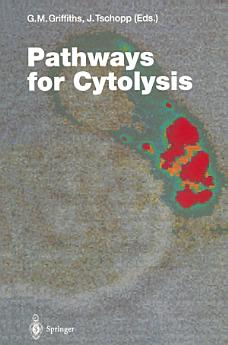Pathways for Cytolysis
Gillian M. Griffiths · Jürg Tschopp
2012년 12월 · Current Topics in Microbiology and Immunology 198권 · Springer Science & Business Media
eBook
224
페이지
report검증되지 않은 평점과 리뷰입니다. 자세히 알아보기
eBook 정보
At first glance the destruction of a target cell by a killer cell seems to be a simple endeavor. A closer look, however, reveals the complex mechanisms underlying this task. Killer cells are able to specifically recognize altered or infected cells. A transient contract with target cells has to be established to allow the delivery of lethal molecules or signals. The killer cell then disengages from the damaged cell and moves away to kill other target cells. After the eradication of the target cells, the number or activity of activated killer cells has to be reduced to avoid nonspecific killing of innocent cells. In 1992, Herman Eisen concluded, in his introductory remarks in the most recent volume on lymphocyte cytotoxicity (EISEN 1993): "Given the immense amount of effort made in the past decade to understand these (lytic) mechanisms, it seems surprising that a consensus about the principal mechanisms has not been reached." Since that time, advances made in the field of cell-mediated cytolysis are so significant that our knowledge regarding the lytic mechanisms has been considerably augmented. Much of this is due to studies with transfectants and mutants-either naturally occurring or generated by gene targeting. It is now clear that there are two predominant pathways which act hand in hand and lead to efficienttarget cell destruction.
이 eBook 평가
의견을 알려주세요.
읽기 정보
스마트폰 및 태블릿
노트북 및 컴퓨터
컴퓨터의 웹브라우저를 사용하여 Google Play에서 구매한 오디오북을 들을 수 있습니다.
eReader 및 기타 기기
Kobo eReader 등의 eBook 리더기에서 읽으려면 파일을 다운로드하여 기기로 전송해야 합니다. 지원되는 eBook 리더기로 파일을 전송하려면 고객센터에서 자세한 안내를 따르세요.







